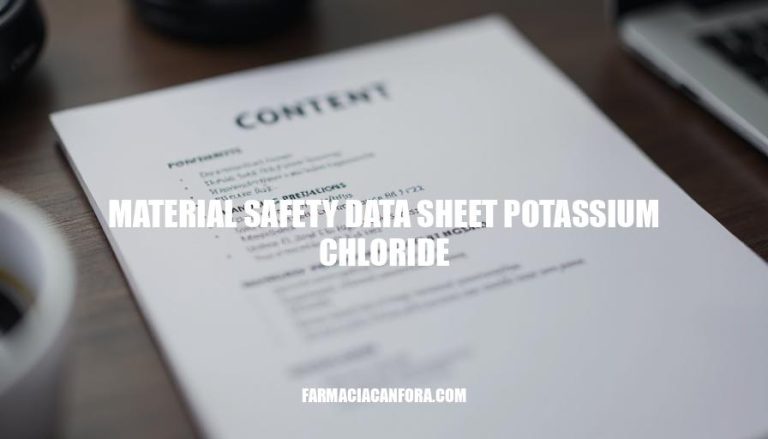


A Material Safety Data Sheet is like a guide for handling chemicals safely. It tells you what to do if something goes wrong. For example, potassium chloride is used in many industries, and an MSDS helps keep people safe by listing its properties, dangers, and safety rules.
Following these guidelines keeps workers safe and protects the environment.
The Material Safety Data Sheet (MSDS) for potassium chloride includes the following key information:
Chemical Identification: Potassium chloride, with the chemical formula KCl and CAS number 7447-40-7, is a white crystalline powder or granules.
Physical and Chemical Properties: Potassium chloride has a molecular weight of 74.55 g/mol, a melting point of 770°C, and a boiling point of 1,420°C. It is soluble in water and insoluble in alcohol.
Hazard Identification: Potassium chloride is not classified as a hazardous substance. It does not have any GHS label elements, hazard pictograms, signal words, or precautionary statements.
Safe Handling and Storage Procedures: When handling potassium chloride, it is recommended to avoid inhalation of dust, wear appropriate personal protective equipment, and ensure adequate ventilation.
Store potassium chloride in a cool, dry, and well-ventilated area, away from incompatible substances.
Emergency Measures: In case of inhalation, move the person to fresh air. For skin contact, wash the affected area with plenty of water. If potassium chloride comes into contact with eyes, rinse immediately with water for at least 15 minutes and remove contact lenses.
If ingested, do not induce vomiting and seek medical attention immediately. In case of fire, use suitable extinguishing media and wear self-contained breathing apparatus.
Adhering to the guidelines provided in the Material Safety Data Sheet (MSDS) for potassium chloride is crucial for ensuring the safe handling, storage, and emergency response procedures are followed. By following these guidelines, workers can avoid potential hazards associated with the chemical, such as inhalation of dust, skin contact, and ingestion.
Proper management of potassium chloride reduces the risk of accidents and injuries to personnel, as well as environmental contamination. Neglecting safety protocols can lead to serious consequences, including exposure to hazardous substances, damage to equipment and facilities, and harm to human health and the environment.
By following the guidelines outlined in the MSDS, workers can minimize risks and ensure a safe working environment. This includes wearing personal protective equipment, ensuring adequate ventilation, and storing potassium chloride in a cool, dry, and well-ventilated area away from incompatible substances. In case of an emergency, knowing how to respond promptly and effectively is critical for preventing harm and minimizing damage.
In summary, adhering to the guidelines provided in the MSDS for potassium chloride is essential for maintaining a safe working environment, protecting human health, and preserving the environment.